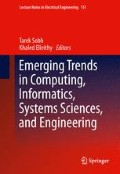Abstract
Laplacian-based derivatives used as a local focus measure to recover range information from an image stack have the undesirable effect of noise amplification, requiring good signal-to-noise ratios (SNRs) to work well. Such a requirement is challenged in practice by the relatively low SNRs achieved under classical phase contrast microscopy and the typically complex morphological structures of (unstained) live cells. This paper presents the results of our recent work on a new, multiscale approach to accurately estimate the focal depth of a monolayer cell culture populated with a moderately large number of live cells, whose boundaries were highly variable both in terms of size and shape. The algorithm was constructed in classical scale-space formalism which is characterised by an adaptive smoothing capability that offers optimal noise filtration/sensitivity and good localisation accuracy. Moreover, it provides a computationally scalable algorithm which not only obviates the need for additional heuristic procedures of global thresholding and (subsequent) interpolation of focus-measure values, but also generates as an integral part of the algorithm, a final range image/map that is demonstrably more realistic and, perceptually, more accurate.
Access this chapter
Tax calculation will be finalised at checkout
Purchases are for personal use only
Notes
- 1.
Each image stack consists of a sequence of twenty-six (0–25) co-registered images, corresponding to the individual image/frames sampled at different focal/depth planes.
- 2.
The cells used were HUVECs (human umbilical vein endothelial cells), which were seeded onto a Hydro Gel. Courtesy of Chip-Man Technologies Ltd..
References
Friedl P, Brocker EB (2004) Reconstructing leukocyte migration in 3D extracellular matrix by time-lapse videomicroscopy and computer-assisted tracking. Methods Mol Biol 239:77–90
Glauche I, Lorenz R, Hasenclever D,Roeder I (2009).A novel view on stem cell development: analysing the shape of cellular genealogies. Cell Prolif 42(2):248–63
Hand AJ, Sun T, Barber DC, Hose DR, MacNeil S (2009) Automated tracking of migrating cells in phase-contrast video microscopy sequences using image registration, J Microsc 234:62–79
Li K, Chen M, Kanade T (2007) Cell population tracking and lineage construction with spatiotemporal context. International Conference on Medical Image Computing and Computer-Assisted Intervention 10(2):295–302
Schroeder T (2005) Tracking hematopoiesis at the single cell level. Ann N Y Acad Sci 1044:201–9
Schroeder T (2008) Imaging stem-cell-driven regeneration in mammals. Nature 453(7193):345–51
Shen F, Hodgson L, Hahn K (2006) Digital autofocus methods for automated microscopy. Methods Enzymol 414:620–32
Nayar SK, Nakagawa Y (1994) Shape from Focus, IEEE Transactions on Pattern Analysis and Machine Intelligence 16(8):824–831
Canny J (1986) A computational approach to edge detection. In: IEEE Transac Pattern Anal Mach Intell 8:679–714
Marr D, Hildreth E (1980) Theory of edge detection. In: Procedings of The Royal Society of London, B207:187–217
Lam KP, Collins DJ, Sulé-Suso J, Bhana R, Rajanee (2009) Advanced CT image visualisation environment (ACTIVE): an investigative study of automated scale selection (poster). IEEE Inf Vis, 2009, Barcelona
Lindeberg T, Garding J (1997) Shape-adapted smoothing in estimation of 3-D depth cues from affine distortions of local 2-D structure. Image Vis Comput 15:415–434
Valliappan M (2010) A multiscale image segmentation algorithm for volumetric (3D) CT-Scan, MSc dissertation (Biomedical Enginnering), Institute of Science and Technology in Medicine, Keele University.
Lindeberg T (1998) Feature detection with automatic scale selection. Int J Comput Vis 30(2):77–116 .
Lindeberg T (1998) Edge detection and ridge detection with automatic scale selection. Int J Comput Vis, 30(2):117–154
Tarvainen J, Saarinen M, Laitinen J, Korpinen J, Viitanen J(2002) Creating images with high data contents for microworld applications. Ind Syst Rev pp 17–23
Koenderink JJ (1984) The structure of images, Bio Cyber 50:363–370.
Rissanen J (1983) A universal prior for integers and estimation by minimum description length. Ann Stats 11(2):416–431
Bovik AC (2009) The essential guide to image processing, Academic Press, San Diego
Namboodiri VP, Chaudhuri S (2007) On defocus, diffusion and depth estimation. Pattern Recognit Lett 28(3):311–319
Narkilahti S, Rajala K, Pihlajamäki H, Suuronen R, Hovatta O, Skottman H (2007) Monitoring and analysis of dynamic growth of human embryonic stem cells: comparison of automated instrumentation and conventional culturing methods. Biomed Eng OnLine 6:11
Alberts B, Johnson A, Walter P, Lewis J, Raff M, Roberts K (2008) Molecular biology of the Cell, 4th edn, Madison Avenue, Garland Science
Malik AS, Choi TS (2008) A novel algorithm for estimation of depth map using image focus for 3D shape recovery in the presence of noise. Pattern Recognit 41:2200–2225
Acknowledgments
We are indebted to Chip-Man Technologies Ltd. for the preparation and loan of the image/video stack used in this study, as part of our research collaboration in improving algorithms for the automated tracking of live-cell cultures.
Author information
Authors and Affiliations
Corresponding author
Editor information
Editors and Affiliations
Rights and permissions
Copyright information
© 2013 Springer Science+Business Media New York
About this paper
Cite this paper
Smith, W.A., Lam, K.P., Collins, D.J., Tarvainen, J. (2013). Estimation of Depth Map Using Image Focus: A Scale-Space Approach for Shape Recovery. In: Sobh, T., Elleithy, K. (eds) Emerging Trends in Computing, Informatics, Systems Sciences, and Engineering. Lecture Notes in Electrical Engineering, vol 151. Springer, New York, NY. https://doi.org/10.1007/978-1-4614-3558-7_92
Download citation
DOI: https://doi.org/10.1007/978-1-4614-3558-7_92
Published:
Publisher Name: Springer, New York, NY
Print ISBN: 978-1-4614-3557-0
Online ISBN: 978-1-4614-3558-7
eBook Packages: EngineeringEngineering (R0)

